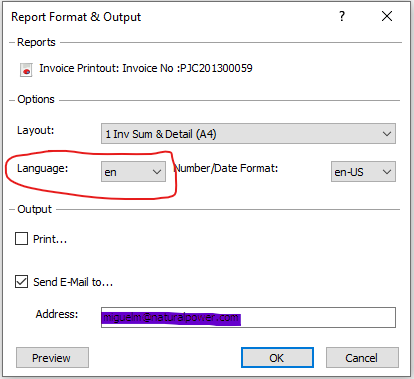Hi,
Could you please explain me the steps which we should follow, in order to translate a crystal report into another language, ex: to Chinese? Look forward for your help.
Thanks,
Thilani
Hi,
Could you please explain me the steps which we should follow, in order to translate a crystal report into another language, ex: to Chinese? Look forward for your help.
Thanks,
Thilani
hi
Crystal framework looks for .rpt layouts in the corresponding language folder which the user selects from print dialog.
if user selects “en” language from the print dialog, the crystal report layout (.rpt) file should be in OpenReportPath\en directory. If the user selects “zh” language from the print dialog, the crystal report layout (.rpt) file should be existing in OpenReportPath\zh folder. The crystal framework is designed this way to allow customers to develop their own versions of crystal layouts for different languages. For example, you can keep the “en” version and “zh” version of same layout in these two folders. To have translations for the report, you will need to add translations to the corresponding report server logic (.rdf).
The OpenReportPath directory value is defined in the Crystal Report server configuration file and the language folders inside that directory use the 2-character ISO codes that IFS uses, e.g. en, de,nl, fr etc.
Nick
A user logged in with one language might be dealing with a customer who wants to do business in another language.
We handle this requirement by reading a Custom Logical Unit that holds languages, field keys, and translations.
Many thanks

Many thanks

We manage one version of the Crystal files in language “en”. This simplifies adding and removing fields because we only need to do it once.
We pull our language text by company--but only partially. We used to use Document Footers for this a lot, but this custom LU gives us additional parameterization to drive which text is chosen.
We have 6 invoices layouts to accommodate the requirements of clients. I have managed so far with staying with only 6 layouts
Do you use this solution to generate invoices in different languages?
Are your invoices fully parameterised?
Yes and Yes. Our multi-language reports have no hard-coded labels. Everything comes from a formula.
We’re about to start un upgrade from v9 to v10. I will share your concept with our technical consultant. Hopefully he will be able to figure out how to achieve a similar result. Many thanks for sharing.
Enter your E-mail address. We'll send you an e-mail with instructions to reset your password.